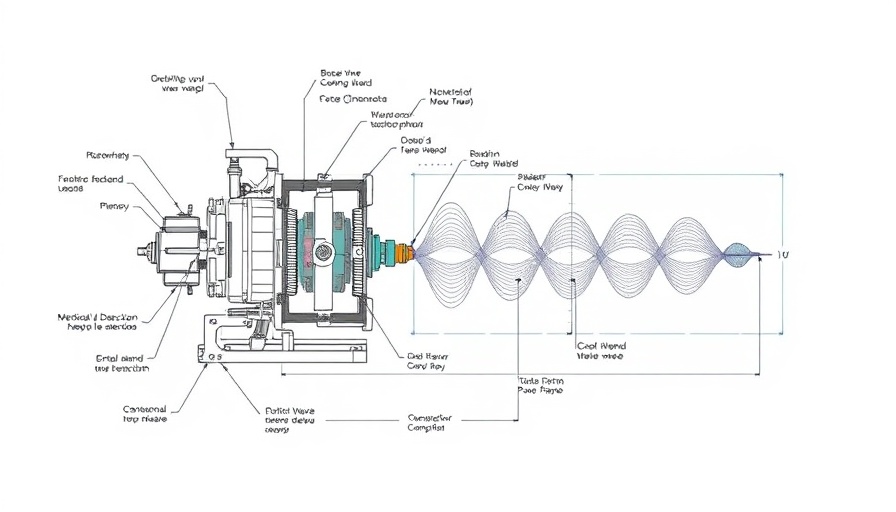
Unlocking the Cosmos: The Promise of Magnetic Gravitational Wave Detection
Recent advancements in gravitational wave detection hold the potential for a revolutionary shift in how we observe the universe. New research published in Physical Review Letters indicates that superconducting magnets, traditionally used in dark matter experiments, might also serve as incredibly sensitive detectors for high-frequency gravitational waves. This innovative approach not only expands the capabilities of gravitational wave observations but also introduces a new frequency band that scientists have struggled to access until now.
The Evolution of Detection Techniques
The journey of gravitational wave detection is steeped in historical significance. It started with Joseph Weber's pioneering experiments in the 1960s, where he introduced the Weber bar method—massive metal cylinders that could resonate at certain frequencies to measure the faint ripples of gravitational waves. However, this approach was limited, only successfully identifying waves at specific resonant frequencies. The new study builds upon this groundwork, promising enhanced sensitivity across a much broader frequency range, particularly in the kilohertz to megahertz spectrum, which has been notoriously difficult to explore.
How Do They Work? A Double Interaction
Key to the new detection mechanism is its two-step interaction which brilliantly leverages the properties of magnetic fields coupled with gravitational waves. As a gravitational wave travels through a superconducting magnet, it induces microscopic vibrations, akin to how LIGO’s mirrors oscillate in response to passing waves. These vibrations cause deformations in the magnet's structure that flow into the wires carrying current, producing oscillating magnetic fields. What’s revolutionary here is that the energy stored in superconducting magnets far exceeds that of traditional detection methods, allowing for more sensitive measurements.
The Importance of Sensitivity in Gravitational Wave Research
As Dr. Sebastian Ellis from the University of Geneva articulated, the traditional Weber bar responds essentially like a musical instrument that performs well only at specific notes. His collaboration with scientists from CERN and Lawrence Berkeley National Laboratory has sought to enhance this interactivity, allowing for gravitational waves to be detected across a wider array of frequencies—even those off-resonance, which the Weber method struggled to capture. This broader sensitivity could significantly impact our understanding of astronomical events such as black hole mergers and neutron star collisions.
Future Implications: A New Era of Cosmic Exploration
The implications of using powerful superconducting magnets for gravitational wave detection are profound. Not only could this lead to new discoveries in astrophysics, but it might also challenge existing theories about the formation and behavior of celestial bodies. As detection technology evolves, we may be poised to answer questions about the fabric of space-time itself, exploring phenomena that remain veiled under conventional observation techniques.
Conclusion: An Invitation to Explore
The exploration of the universe through the lens of gravitational waves is entering an exciting new chapter with the advent of superconducting magnet technology. For enthusiasts and future researchers alike, this groundbreaking method shows that the skies are not the limit; it's just the beginning. As these technologies develop, the excitement surrounding cosmic discoveries will surely grow, drawing more minds to the fields of physics, space exploration, and modern science.
 Add Row
Add Row  Add
Add 




Write A Comment